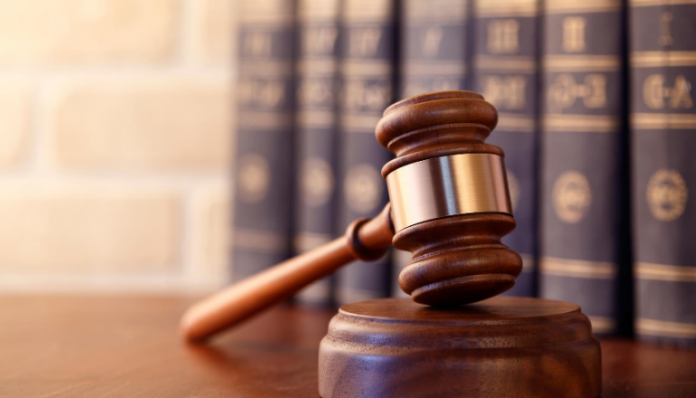This article is written by Arya Mittal from Hidayatullah National Law University. The article compares the federal court system in Switzerland and the United States of America.
Table of Contents
Introduction
The United States of America and Switzerland have had good diplomatic relations for a long time. The two countries have been on good terms and have many bilateral agreements in place. In this scenario, it is interesting to examine how far these two countries have been inspired by the political systems of one another. The United States and Switzerland are among the two countries that have distinct judiciary at the federal and state (called cantons in Switzerland) levels. This means that instead of an integrated judiciary, the judicial power has been separately given to the federal level and the state/canton level to exercise such power on federal and state/cantonal laws respectively. In this situation, even the jurisdiction, power, and functions of the two would differ. Thus, the jurisdiction, power, and functions of the federal courts of the US and Switzerland have been discussed in detail hereafter, along with various examples in the form of case studies. Additionally, a comparative analysis has been laid down in respect of the federal courts of the two countries along with their similarities and differences.
Switzerland
Organization
The judiciary of Switzerland is bifurcated into the federal level and cantonal levels. The scope in the current article is only limited to the federal courts and hence, cantonal courts have not been discussed. The Swiss Federal Courts have a two-tier structure. The superior most is the Federal Supreme Court of Switzerland which is the ultimate authority to hear cases from the rest of the federal courts and cantonal courts. At the second level, there exists Federal Criminal Court, Federal Administrative Court, and Federal Patent Court.
Power
The power to exercise judicial power by the federal courts is given by the Constitution itself and it acts as an independent authority. Their power is limited since they cannot deal with the constitutionality of federal laws. All their decisions should conform to federal laws. Further, only in certain circumstances, they can question the validity of cantonal constitutions i.e. when they are inconsistent with the federal constitution.
Function
The federal courts perform different functions. Federal Criminal Court, Federal Administrative Court, and Federal Patent Court are the primary courts where the question relates to federal law in their respective areas i.e. criminal, administrative, and civil. Further, they hear appeals from the cantonal courts in their respective areas and the Federal Supreme Court is the last resort and ultimate authority to entertain these appeals. Also, it must be remembered that the appeals from cantonal courts must be a conflict involving federal law or two or more cantonal laws or cantonal laws inconsistent with the cantonal or federal constitution.
Jurisdiction
The Swiss federal courts enjoy both original and appellate jurisdiction in different civil, criminal, and administrative matters. Article 189 of the Swiss Constitution provides that the subject matters on which the Swiss Federal Supreme Court can exercise judicial power. These are “federal law, international law, inter-cantonal law, cantonal constitutional rights, the autonomy of the communes and other cantonal guarantees in favour of public law corporations, federal and cantonal provisions on political rights.”
United States
Organization
Like the Swiss judicial system, the judiciary of the United States of America is also bifurcated into two levels i.e. federal courts and state courts. The federal court system of the US is a three-tier structure. The superior most in the system is the Supreme Court of the United States which is the ultimate authority to hear any case dealing with federal law. At the second level are the circuit courts which are the court of appeal. The lowermost in the structure are the district courts which are the general trial courts dealing with civil and criminal laws.
Power
Section 1 of Article III of the US Constitution vests the power to all the federal courts i.e. the Supreme Courts and courts under it which are empowered by the US Legislature i.e. the Congress. Further, Section 2 empowers the federal courts to exercise judicial power on matters stated in the section therein. It also states the limitations of the federal courts on exercising judicial power on certain matters which have also been stated in the provision itself.
Further, the federal courts are also empowered to issue writs by the All Writs Act. The provision states, “The Supreme Court and all courts established by Act of Congress may issue all writs necessary or appropriate in aid of their respective jurisdictions and agreeable to the usages and principles of law.”
Function
The federal courts exercise their judicial power over the federal laws passed by Congress and often deal with the constitutionality of these federal laws. However, their powers are limited and have to rely on the executive wing to enforce their decisions. Further, the US Supreme Court is the final arbiter of federal matters concerning legal questions.
Jurisdiction
It is believed that federal courts are “courts of limited jurisdiction”. To exercise its jurisdiction, it has to meet certain criteria. Firstly, they can exercise their judicial power on only those issues where any actual case has been filed i.e. there is a legal dispute. Secondly, only an aggrieved plaintiff can apply to a federal court. Lastly, the court should be authorized either by the Constitution or Congress to act on such an issue. Moreover, the federal courts hear issues involving federal laws only and not state laws.
As regards the type of jurisdiction, the Supreme Court has original as well as appellate jurisdiction. The former is in the cases of disputes between the state parties and the latter is as a result of appeals from the Circuit Courts. The Court of Appeals or the Circuit Courts, as the name suggests, primarily have appellate jurisdiction. The district courts enjoy original jurisdiction and can hear on almost all types of laws.
As regards the subjects, they have a variety of matters over which they can exercise jurisdiction. The federal courts are empowered to hear matters relating to civil and criminal laws, bankruptcy cases, admiralty laws, cases involving the constitutionality of a statute or law, disputes between states, disputes involving ministers, etc.
Critical analysis
Similarities
|
Basis |
Similarity |
|
Authorization |
Both the federal court systems are empowered to exercise judicial power by their respective constitutions only. |
|
Mediator between states |
The federal courts of both countries are given the power to act as a mediator between the states or cantons and solve their disputes. |
|
Limited jurisdiction |
Both the systems have limited jurisdiction since they cannot exercise their judicial power on a specific law of a state or canton. |
|
Jurisdiction in state/cantonal laws |
Though they cannot exercise judicial power to decide a case relating to cantonal/state law, yet the Supreme Courts of both countries have the power to strike down the state/cantonal law if it is inconsistent with the Swiss/US Constitution. |
|
Original jurisdiction of Supreme Court |
The Supreme Court of both the United States as well as Switzerland has original jurisdiction in cases where the dispute is between two states/cantons or between federal and state/canton. |
|
Appellate jurisdiction |
The Supreme Court of both the United States and Switzerland have appellate jurisdiction in case of all appeals from state/cantonal cases and from lower levels of federal courts where the issue relates to federal law. |
|
Binding effect of Supreme Court decisions |
The decisions of the Federal Supreme Court of Switzerland and Supreme Court of the United States are legally binding on cantons and states respectively. |
|
Practicality in appeals |
In both the federal courts, only a few cases reach the Supreme Court since the same is not accepted by the Courts and cases mostly dispose of at the Court of Appeals or the Three Federal Courts, whatever the case is. |
Differences
|
Basis |
Swiss Federal Court |
US Federal Court |
|
Number of tiers |
It is a two-tier structure consisting of the Supreme Court at one level and Federal Criminal Court, Federal Administrative Court, and Federal Patent Court at the second level. |
It is a three-tier structure comprising the district courts, above which are circuit courts and Supreme Court at the highest level. |
|
Classification of courts |
The three federal courts at the secondary level are classified based on the law they deal with i.e. criminal, civil and administrative. |
The circuit courts and district courts at the secondary and tertiary levels respectively are divided based on the states i.e. the area they have jurisdiction in. |
|
Independence |
The Swiss federal courts are independent of the legislature and executive. |
US federal courts are not independent since they depend on the executive to enforce their decisions. |
|
Challenging the constitutionality |
They do not have the power to challenge the constitutionality of any of the federal laws. |
They have the power to check the constitutionality of an act of Congress and can even strike it down. |
|
Head of the Supreme Court |
The head of the Swiss Federal Supreme Court is called the President. |
The head of the US Supreme Court is called the Chief Justice. |
|
Term of federal judges |
The term of office of Swiss federal judges is six years. However, they can be reappointed an unlimited number of times. |
There is no such prescribed term of office and the federal judges continue to serve until they die, resign voluntarily, or are impeached by Congress. |
|
Power to strike down federal laws |
The Swiss Federal Courts have no power to strike down a federal law or declare it invalid. |
The Supreme Court of the United States can quash a law if it believes that it is unconstitutional. |
|
Divisions of the Supreme Court |
There are seven divisions based on the subject matters such as civil, criminal, public, etc. |
There is no such division. |
|
Mechanism for choosing new judges |
The judges are not appointed but rather elected by the Parliament. |
The judges are appointed by the President of the United States with the advice of the Senate. |
|
Power to issue writs |
The Swiss Constitution provides only for the writ of habeas corpus. |
The US courts allow for all kinds of writs whether prerogative or any other writ. |
|
Power of judicial review |
There is no such power. It has constitutional jurisdiction to declare federal laws unconstitutional, yet has to enforce them all the time. |
The US Supreme Court has the power of judicial review which has evolved through the landmark case of Marbury v. Madison (1803). |
|
Deviation from precedents |
Lower courts can deviate from the precedents in certain specified circumstances. |
Lower courts cannot deviate from the precedents in any case. |
|
Applicability of international laws |
The Swiss federal judges attach a lot of importance to the international laws even if such law is inconsistent with their national law for the reason that Switzerland follows monism. |
The same is not true for US federal courts. Though importance is given to international law, yet only those laws which have been incorporated in the national laws are applicable. |
Conclusion
The legal system of the United States and Switzerland differ substantially in terms of their federal court system. The former has a three-tier structure whereas the latter has a two-tier structure. Even the composition, functions, and powers of the two systems are distinct. Though the two countries also have certain similarities in terms of jurisdiction of the federal courts, yet both of these federal court systems are distinct and unique in their own ways.
These differences arise also on account of their existing political system since the judiciary is just one wing of democracy apart from legislature and executive. To exemplify, Switzerland is a monist state and thus gives a lot of importance to the international laws whereas on the contrary, the US, which is a dualist, only emphasizes those international laws which it has itself ratified. Swiss Federal courts are independent in decision-making whereas American federal court decisions are enforced by the executive. On the other hand, US federal courts have the power of judicial review whereas Swiss federal courts have limited judicial reviewing power.
To conclude, the United States and Swiss federal courts have certain similarities amongst all the differences and both of these federal systems are distinct in their own way. Also, these differences are bound to occur owing to the difference in the political system, geographical conditions, historical background, legal system, etc.
References
- https://link.springer.com/chapter/10.1007/978-3-319-92381-9_8
- https://www.jstor.org/stable/10.3138/j.ctt1whm97c.17
- https://www.uscourts.gov/sites/default/files/understanding-federal-courts.pdf
- https://www.ch.ch/en/demokratie/federalism/separation-of-powers/switzerlands-courts/
LawSikho has created a telegram group for exchanging legal knowledge, referrals, and various opportunities. You can click on this link and join:












